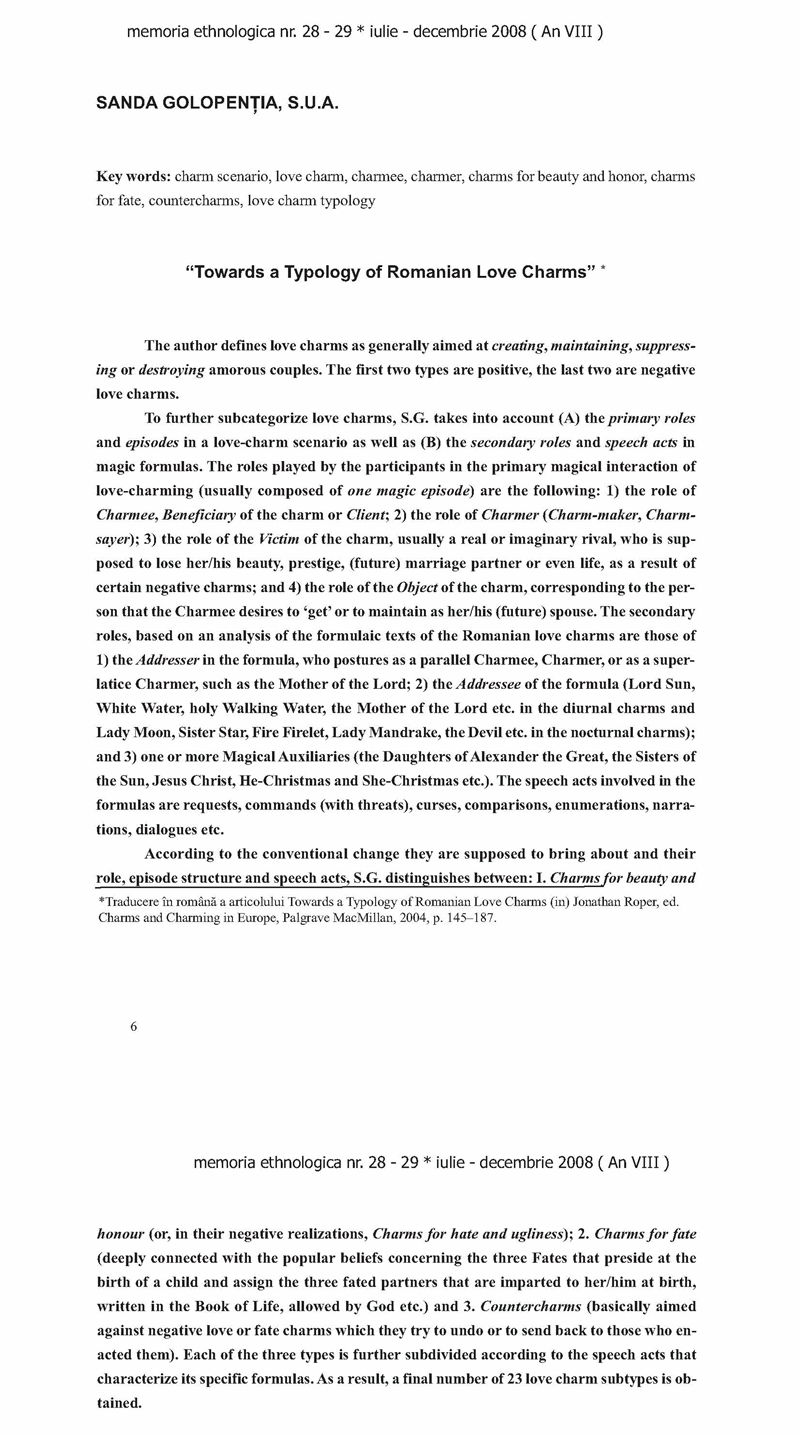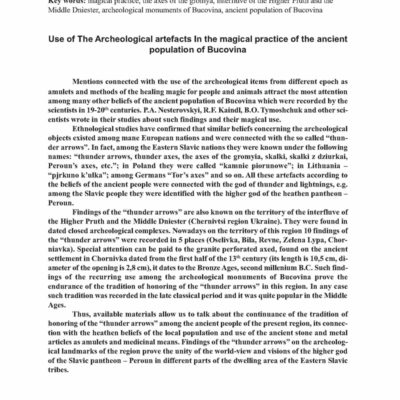Trebuie să fii autentificat pentru a publica o recenzie.
Către o tipologie a descântecelor de dragoste româneşti
“Towards a Typology of Romanian Love Charms”
The author defines love charms as generally aimed at creating, maintaining, suppressing
or destroying amorous couples. The first two types are positive, the last two are negative
love charms.
To further subcategorize love charms, S.G. takes into account (A) the primary roles
and episodes in a love-charm scenario as well as (B) the secondary roles and speech acts in
magic formulas. The roles played by the participants in the primary magical interaction of
love-charming (usually composed of one magic episode) are the following: 1) the role of
Charmee, Beneficiary of the charm or Client; 2) the role of Charmer (Charm-maker, Charmsayer);
3) the role of the Victim of the charm, usually a real or imaginary rival, who is supposed
to lose her/his beauty, prestige, (future) marriage partner or even life, as a result of
certain negative charms; and 4) the role of the Object of the charm, corresponding to the person
that the Charmee desires to ‘get’ or to maintain as her/his (future) spouse. The secondary
roles, based on an analysis of the formulaic texts of the Romanian love charms are those of
1) the Addresser in the formula, who postures as a parallel Charmee, Charmer, or as a superlatice
Charmer, such as the Mother of the Lord; 2) the Addressee of the formula (Lord Sun,
White Water, holy Walking Water, the Mother of the Lord etc. in the diurnal charms and
LadyMoon, Sister Star, Fire Firelet, LadyMandrake, the Devil etc. in the nocturnal charms);
and 3) one ormoreMagicalAuxiliaries (the Daughters ofAlexander the Great, the Sisters of
the Sun, Jesus Christ, He-Christmas and She-Christmas etc.). The speech acts involved in the
formulas are requests, commands (with threats), curses, comparisons, enumerations, narrations,
dialogues etc.
According to the conventional change they are supposed to bring about and their
role, episode structure and speech acts, S.G. distinguishes between: I. Charms for beauty and
honour (or, in their negative realizations, Charms for hate and ugliness); 2. Charms for fate
(deeply connected with the popular beliefs concerning the three Fates that preside at the
birth of a child and assign the three fated partners that are imparted to her/him at birth,
written in the Book of Life, allowed by God etc.) and 3. Countercharms (basically aimed
against negative love or fate charms which they try to undo or to send back to those who enacted
them). Each of the three types is further subdivided according to the speech acts that
characterize its specific formulas.As a result, a final number of 23 love charm subtypes is obtained.





Recenzii
Nu există recenzii până acum.